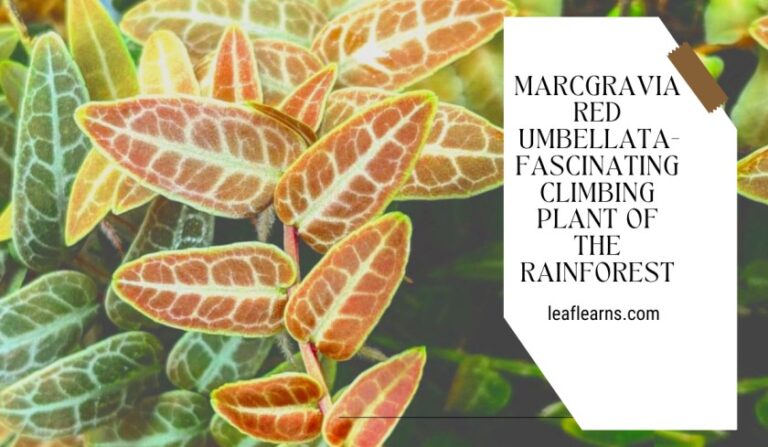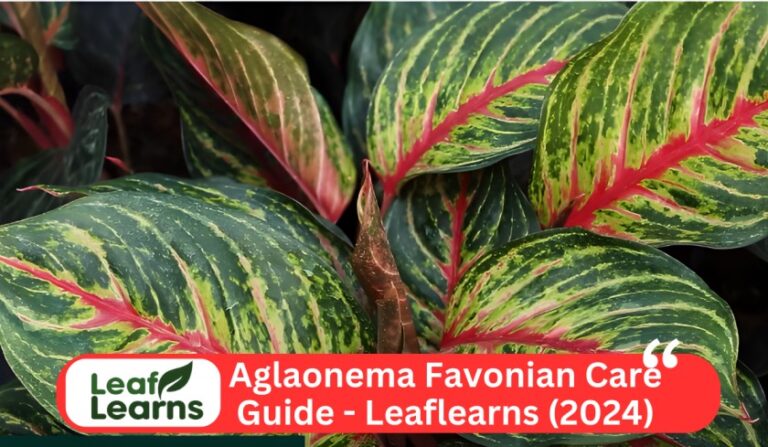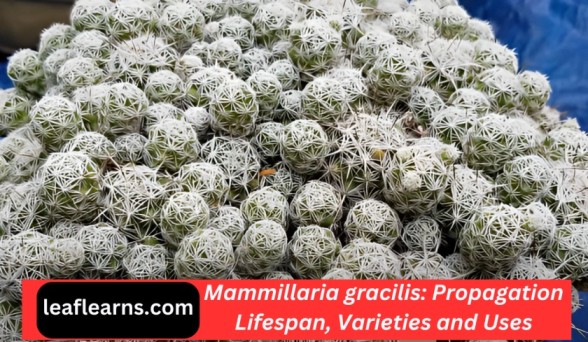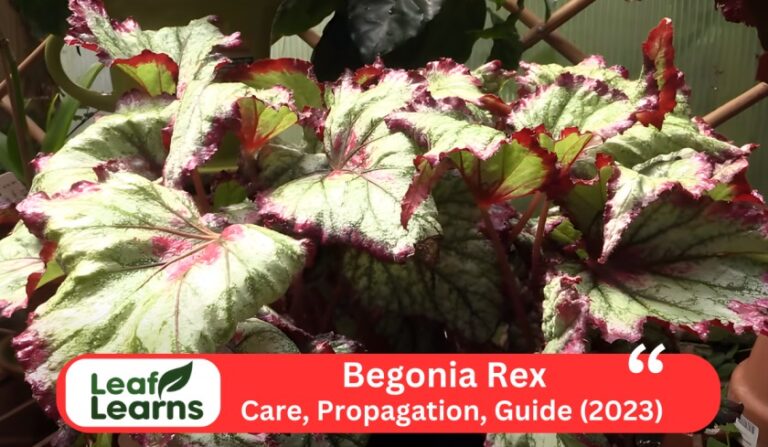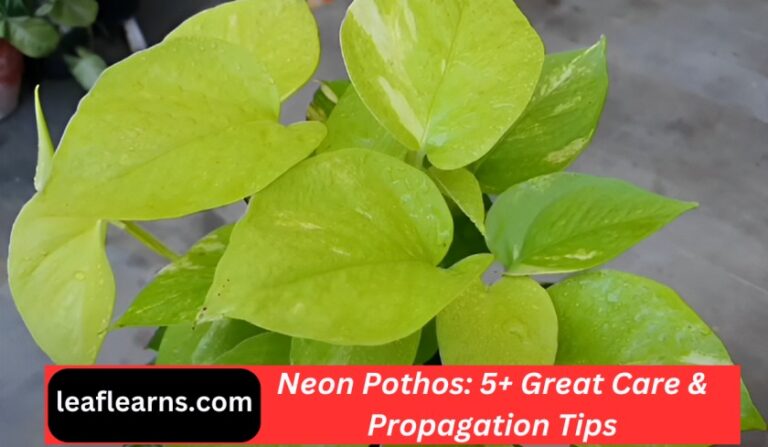Callisia Repens Care and Propagation Guide (2024)
There are several names for the plant Callisia Repens. It is also known as the pink lady plant or the creeping inching plant. Low-growing and occasionally useful as ground cover, it is a plant. They produce wonderful attractive plants when grown in containers.
The attractive and adaptable trailing plant often known as the Turtle Vine or Creeping Inch Plant, is becoming more and more well-liked among lovers of both indoor and outdoor gardening. This hardy succulent is native to South America’s tropical regions and is well-known for its carefree nature and wealth of advantages.
| Common name | Creeping inch plant, pink lady plant |
| Scientific Name | Callisia Repens |
| Family | Commelinaceae |
| Distribution | Central and South America |
| Plant type | Low-growing, herbaceous perennia |
| Height | 4 to 12 inches tall |
| Growth rate | up to 50cm per year |
| Leave colour | Shiny green , reddish on the bottom |
| Flower | Small, inconspicuous, pink |
| Foliage | Small, succulent, green leaves |
| Toxicity | Non-toxic to both pets and people |
| Light requirement | Bright indirect sunlight |
| Soil requirement | Well-draining, acidic soil |
| Watering Need | Regular Watering |
| Uses | Ground cover, hanging baskets, terrariums |
| Wildlife attraction | Attracts Birds |
| Special feature | Help remove toxins from the air and improve air quality, |
| Propagation | Stem cuttings, division |
| Life cycle | Perennial |
| Flower Bloom Time | Late spring or early summer |
| Leaf length | up to 4 cm long |
This plant may be propagated easily, largely by stem cuttings. Simply cut a good stem, let it callus for one or two days, and then plant it in a soil that drains well. Despite its adaptability, this resilient plant likes bright, indirect light and regularly wet soil. To avoid root rot, avoid overwatering.
With its tiny, succulent leaves grouped in rosettes and trailing branches that produce a lovely cascading effect, turtle vine is prized for its decorative appeal. It frequently serves as a ground cover or an aesthetic accent for indoor areas, balconies, and gardens. Additionally, it is a well-liked option for enhancing indoor air quality because to its air-purifying capabilities.
Pink lady plant has historically been utilised in herbal medicine for its putative anti-inflammatory and wound-healing effects, in addition to its aesthetic appeal and air-cleansing capabilities. The leaf colour and size of this plant’s varieties can vary, and some even have variegated patterns or hues of green and purple.

Contents
- 1 5 Steps of Growing
- 2 What’s Unique About Callisia repens?
- 3 Callisia Repens Care
- 4 Callisia Repens Propagation
- 5 Common Health Problems
- 6 Preferred Climate:
- 7 Appearance
- 8 Foliage
- 9 Fragrance
- 10 Propagation
- 11 Tips for Growth
- 12 Uses and Benefits
- 13 Varieties
- 14 Toxicity
- 15 Spots on her pink bits!
- 16 Common Problems
- 17 Growing Problems
- 18 Pruning and Pest Control
- 19 Caring for Callisia Repens: Indoor and Outdoor Care Guide
- 20 Understanding the Toxicity and Varieties
- 21 Conclusion
- 22 FAQs
5 Steps of Growing
- Choose a pot that is the right size and has sufficient drainage.
- Put some indoor plant mix in your container.
- Pick a location with strong, indirect lighting.
- Make sure the soil is kept just barely damp when watering.
- Once a month, fertilise all purposes, and give your plant frequent trims.
What’s Unique About Callisia repens?
This herbaceous plant, which is native to Mexico, Central America, South America, and the West Indies, produces runners or stolons. They were simple to plant and spread once there, forming a mat groundcover. In tropical and warm temperate locations, you may readily find them growing in riparian zones, secondary forests, and shrublands.

Callisia Repens Care
This plant can be easy to care for. But, they do have specific lighting and watering requirements. By meeting them, you ensure proper plant growth. Potting also matters with the plant. Get one with enough drainage holes.
Lighting Requirements
Bright, filtered sunshine is ideal for this plant’s growth. It should not be exposed to strong, direct sunlight since the leaves may become burned. Insufficient lighting can cause leggy growth and less vibrant vegetation.
For the plant, light levels should be kept reasonable. This would include receiving adequate exposure to direct yet intense sunshine.
A certain amount of direct sunlight is tolerable. However, they may lose their pink variegation with time. Callisia may also have scorched leaves. Plant development is hampered by little sunshine, which also results in minimal variation
They should ideally be stored in a space with an east-facing window. They may access the morning light there. Get some protection from the blazing sun even so. If the plant cannot be moved, think about installing a light curtain. The abrasive solar rays would be filtered by this.
Watering Requirements
Maintain a moderate frequency of watering. For the plant, once a week should be plenty. Watering should be done with wet soil in mind, not a soggy one.
Overwatering exposes the roots to the possibility of decay. Underwatering is detrimental for the plant species because they might become dehydrated.
Before watering, let the top inch of soil dry off. Water your plants well, but make sure any extra water drains away to avoid root rot. Water more regularly in the spring and summer and less frequently in the winter when the plants are dormant.
Check for extra moisture in the top layer of soil before watering. Use a moisture metre or try poking your finger into the ground. When it seems dry, start watering. Attempt lifting the pot as well. Do not water the plant if it seems heavy. If not, move on to watering.

Soil Requirements
Use a potting mix that drains properly and retains moisture effectively. It should have a rich, somewhat acidic flavour.
Consider adding peat moss to a standard succulent potting mix. Coco coir and perlite should be added. To make it rich, organic compost should be added. The pH level ought to be kept between 5.6 and 6.7.
Callisia-repens may be grown in a typical potting soil. Similar to many other plant species, having a mix that is properly aerated and well-draining is advantageous.
The soil, organic materials, and drainage amendments must be in appropriate proportion. To ensure that the roots are healthy, we want to have a mix that drains excess moisture and allows for adequate air circulation.
Temperature And Humidity Requirements
Temperatures between 50 to 86 degrees Fahrenheit are ideal for Pink Lady plants. Unless you live in an especially dry environment, the humidity should be enough in most homes.
Keep the humidity at 30–40% in the winter and 50–60% in the summer. Keep an eye out for indications of low humidity, such as browning leaf tips or decreasing soil.
A plant may grow in conditions of medium humidity. There is thus no cause for concern if your plant is housed inside. Regular sprinkling is not necessary until the air becomes excessively dry. Then, providing more moisture might be beneficial.
The ideal temperature range is 59 to 75 degrees Fahrenheit. Protect them from extreme cold as they aren’t frost resistant. They ought to be kept away from windows throughout the winter. Instead, grow them inside.
Fertilizer Requirements
The turtle vine plant needs fertilizer for growth. During the summer, fertilizer should be applied to them. They are most active at this time. Use a liquid fertilizer to do this once every two weeks.
Before using fertilizer, make sure you diluted it by 50%. Do not fertilize this plant throughout the winter. By then, it ought to be dormant.
Fortunately, this pink woman doesn’t eat a lot. Only during the summer may you apply liquid fertiliser every 10 to 14 days.
The facility is now engaged in intense growth activity. Additionally, flowering is beginning at this time of year. The additional nutrients will undoubtedly aid the plant in carrying out these critical operations.

Callisia Repens Propagation
You can propagate the turtle vine plant in two methods;
- Through seeds
- Through stem cuttings
Propagating through stem cuttings is faster than with seeds. Always ensure you sterilize the tools for cutting before use.
Common Health Problems
- Powdery mildew
- Root rot
- Mealybugs
- Spider mites
- Thrips
- Aphids
- Whiteflies
- Scale
Preferred Climate:
Even though Pink Lady succulents are fairly hardy, they prefer humid and moderate areas. Avoid planting your Pink Lady plants in direct sunlight while choosing a location for them to flourish. You can move them closer to windows during their growing season, but keep them at least three to four feet away to avoid harm.
Appearance
You’ll understand why after taking just one glance at the plant. Clearly visible pink stripes may be seen on the leaves’ surface. It’s a straightforward yet attractive ornamental plant that has moderate growth, is compact, and creeps by nature.

Foliage
If you decide to use this climbing basket plant as inside décor, you can never go wrong. Its tiny, oval, waxy leaves can grow to be 2.5 cm (1 inch) long. Each leaf is placed across from another. The pink vine plant has variegated leaves. It has a blend of pale pink, green, and either white or cream.
Flowering
A pink lady plant has more than just leaves. Additionally, it produces clusters of its own tiny, white flowers. These small blossoms might easily go unnoticed if viewed from a distance.
That is due to their size, which is comparatively small. But those adorable blossoms are absolutely visible if you look attentively.
Wait till the summer and fall seasons if you want to see the this plant blossom. The flowers develop during these times. A suitable lighting environment will aid plants in producing blooms when the time is right. Therefore, be careful to offer the ideal growth circumstances.

Size and Growth
Remember that Callisia-repens grows quickly if you’re wondering about its growth rate. Even a little pot might quickly become too small for them. When in the ground, they may quickly spread and fill in the empty spots.
Although this plant grows quickly, it yet manages to stay short and compact. It could only grow to a maximum height of 4 inches (10 cm). They stay close to the ground even as they crawl. This plant is a little plant, therefore you should focus on controlling its spread.
Fragrance
When it comes to this plant scent, not much can be expected. It has no smell at all throughout. So don’t anticipate the plant to release a pleasant scent. That sort of treat won’t be given to you. Of course, you shouldn’t be let down by this. Whether or not the plant has a fragrant scent, it is still beautiful. Enjoy your plant’s benefits for the time being.
However, the Callisia genus has a species with aromatic blooms. Callisia fragrans is the name of this plant. The name pretty much says it all, I suppose. A lengthy stem also bears a cluster of small, white blooms.

Propagation
One of the fascinating aspects of this plant is its ease of propagation. Whether you’re a seasoned gardener or a beginner, propagating this plant is a straightforward process. Here are a few methods to consider:
Cuttings
This is the most typical and straightforward method of propagation. Take a good stem cutting with a few leaves still on it, and give it a day or two to calluse.
The cutting should then be planted in a soil that drains well, lightly watered, and kept in direct yet bright sunshine. You’ll see fresh growth in a few weeks, which denotes effective replication.
Division
Consider splitting your Callisia-repens if it has become too big or crowded in its pot. Remove the plant from its container with care, then gently cut the root ball into smaller pieces. Replant these parts in new pots with new potting soil and give them plenty of water.
Offsets
At the base of the main plant, this sporulates tiny offsets or “pups” on occasion. These offsets may be carefully separated and potted separately to produce new plants. For greater success, make sure each offset has a few roots.
Tips for Growth
To encourage robust growth and vibrant foliage, consider these tips:
Pruning
To keep your plant looking compact and bushy, regularly prune and pinch back the plant. Additionally, it stops leggy growth.
Support
Stakes or trellises can be used to support your plant if it starts to topple over if it becomes too top-heavy.
Repotting
Your turtle vine could overflow its present container as it develops. When you see the roots getting congested, repot it into a little bigger container.
Uses and Benefits
This type of plant offers more than just aesthetic appeal; it also brings several benefits to your indoor environment:
Air Purification
Like many houseplants,it removes pollutants from the air while also releasing oxygen. It could make a place to live healthier.
Stress Reduction
It has been demonstrated that taking care of indoor plants lowers tension and anxiety. Calming effects may be produced by soothing green leaves.
Decoration
Its trailing growth habit and attractive, variegated leaves make this an excellent choice for hanging baskets, decorative pots, or as ground cover in larger containers.
Medicinal Uses
Some cultures employ Callisia-repens in traditional medicine due of the plant’s possible therapeutic benefits. Before taking any plant for therapeutic purposes, you must, however, speak with a medical expert.
Varieties
Callisia-repens ‘Bianca
This variety features striking, white-edged leaves that add a touch of elegance to any indoor space.
Callisia-repens ‘Pink Lady’
As the name suggests, this variety boasts pinkish hues in its leaves, providing a subtle pop of color.
Callisia-repens ‘Gold
With vibrant yellow or gold variegation on its leaves, this variety adds a bright and cheerful element to your home decor.
Callisia-repens ‘Mysorensis
This unique variety has narrow, grass-like leaves that set it apart from the more common broad-leafed varieties.
Toxicity
If you have dogs and children at home, you’d be lucky to cultivate this plant. For either of these two, the plant is not thought to be harmful. This ornament definitely meets the bill if you’re seeking for anything that is secure for one’s health. However, there are a few things to be aware of.
Spots on her pink bits!
Back off on the light if you see that her pink and cream leaves are beginning to yellow or are developing freckles and blotches.
Though she is a succulent, you can observe some early signs of sunburn. Although too much or too intense light can burn the more fragile, lighter leaves. Change her light while keeping an ear to those leaves.
For Humans
Although this plant toxicity has been removed from our list of things to be concerned about, we nevertheless advise you to exercise caution. The plant’s vibrant colours might readily draw your children’s attention.
Attempt to be cautious while your youngsters are there because this plant is not edible. This could be deadly if consumed in large quantities.
For Pets
If your pets are particularly mischievous, you should use caution. They may play with your plant succulent just as effortlessly. Not only will it destroy your plant thereafter, but it also runs the risk of poisoning your pets. if they are able to consume even a small number of its leaves.
Therefore, always offer a safe zone for the dogs and the plants to avoid these situations.
Common Problems
Despite the plant’s toughness, there are a few scenarios you should watch out for. After all, your pink lady is still a live creature. It has certain weaknesses.
Pests
Spider mites, mealybugs, aphids, whiteflies, root mealybugs, scale, and thrips are some of the pests associated with this plant. If such organisms are allowed to grow, they may cause significant harm to the plant’s leaves and root system. It’s crucial that you periodically keep your plant under control. When such alien creatures are discovered, remove them.
Spraying diluted dish soap on the leaves, especially in the colonised regions, will drive these pests away. At times, simply spraying water on the problem will enough. If they keep returning, it’s necessary to use pesticides to exterminate them once and for all. However, this circumstance is uncommon, so you can unwind.
Growing Problems
A pink lady plant should be simple to grow. This ornamental is little maintenance and would essentially develop by itself. You won’t spend a lot of time or effort taking care of it. It is an easy-to-grow foliage plant.
There are simply two things that you shouldn’t allow to happen: underwatering and overwatering. The health of your plant may be considerably impacted by these two. If they are weak, they will become more vulnerable to insects and infections.
Pruning and Pest Control
Always use spotless shears and tools while pruning. Quickly remove any leaves that are yellow or decaying. Be on the lookout for typical pests like aphids and spider mites, as well as any possible illnesses.
Caring for Callisia Repens: Indoor and Outdoor Care Guide
This plantis a versatile and attractive plant that can thrive both indoors and outdoors, making it a popular choice among plant enthusiasts.
When it comes to care, understanding its unique needs is essential for ensuring its well-being. This plant requires moderate watering, and its care largely depends on whether it is kept indoors or outdoors.
When grown indoors, it’s essential to provide bright, indirect light and maintain a regular watering schedule, allowing the soil to partially dry between waterings.
Additionally, to enhance its growth and maintain its vibrant appearance, propagating Callisia-repens can be done through cuttings in water, and some enthusiasts even seek to make the leaves more pink through careful care techniques.
Understanding the Toxicity and Varieties
While Callisia-repens is a resilient and visually appealing plant, it’s important to note that some varieties of this species can be toxic to pets, especially cats. To ensure the safety of your furry companions, it’s crucial to be aware of the potential toxicity associated with certain types.
The plant’s toxicity may lead to health issues if ingested by pets, making it essential to keep it out of their reach or consider safer alternatives for households with animals. However, with proper care and precautions, this plant can thrive and bring a touch of natural beauty to your indoor or outdoor spaces, all while highlighting its stunning varieties like the Pink Panther, Bianca, and Bolivian Jew.
Conclusion
In conclusion, Callisia repens is a wonderful addition to any indoor garden due to its simple propagation, low maintenance needs, and variety of available species. The Turtle Vine may survive in a variety of environments and offers both aesthetic and health advantages, regardless of your level of experience with houseplants.
Why not appreciate the beauty and serenity this beautiful trailing plant gives by bringing it inside? Your plant will repay you with rich, flowing foliage for years to come if you give it a little tender love and care.
FAQs
Do Callisia Repens need sunlight?
Indirect sunlight that is bright will be ideal for for this plant. Additionally, it can endure low light levels.
Is Callisia Repens an indoor plant?
This plant is the ideal small houseplant, Bianca has lovely, tiny green and pink leaves and is simple to care for indoors.
Are Callisia Repens easy to care for?
Although it is a very low maintenance plant that grows quickly and spreads freely, it can be sensitive to overwatering.
Is Callisia Repens toxic to pink ladies?
It is unknown whether plant, especially the Pink Lady, a variegated variety, is poisonous to people or animals when consumed.
How much water does Callisia repens need?
Water once per week, less often in Winter and more often in Summer.
How do you keep Callisia repens pink?
Give Callisia-repens (Pink Lady) bright indirect light and well-draining soil to keep it pink. To stop the foliage from becoming green, keep humidity levels normal and abstain from overwatering.
Is Callisia repens poisonous?
Another poisonous trailing plant, Callisia-Repens, can result in severe poisoning if consumed in sufficient quantities. The risk they represent to your dogs is lessened by the fact that these plants are frequently kept hanging in baskets or somewhere out of reach.
What are the common problems with Callisia repens?
This plant may start to lose its luster for a variety of different reasons.
Is Callisia repens a succulent?
A succulent creeping plant from the family Commelinaceae, Callisia-repens is sometimes known as creeping inchplant or turtle vine.

